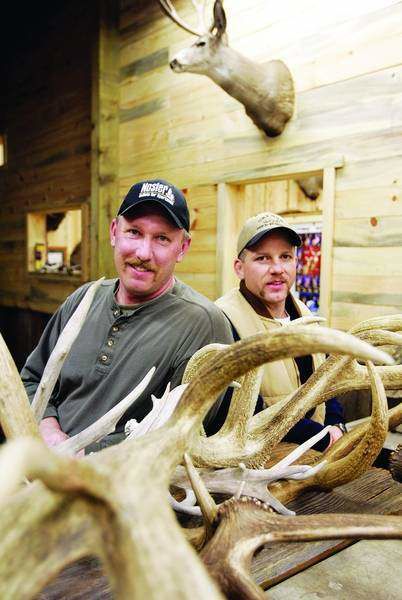A different kind of hunt
Published 4:00 am Thursday, March 23, 2006

- Troy Capps, left, and Rob Tanner, right, found more than 250 deer or elk antlers last year, including 46 in just one day. The brothers-in-law recently started a club called Oregon Shed Hunters.
REDMOND – Troy Capps and Rob Tanner liken their passion to an Easter egg hunt for adults.
But as Tanner is quick to point out, while Easter comes only once a year, shed hunters get their Easter egg hunt every time they go looking for antlers.
Capps and Tanner, brothers-in-law who live in Redmond, started Oregon Shed Hunters (www.oregonshedhunters.com) this past winter. The organization gives antler-shed hunters a place to have their sheds officially scored and measured. It also serves as a record book for Oregon sheds.
Capps, a teacher in Culver, and Tanner, a hydrologist for the U.S. Forest Service in Prineville, set up a booth for their club at the Central Oregon Sportsmen’s Show earlier this month, and they quickly realized how popular the hobby of searching for deer and elk antlers really is.
”It’s huge,” Capps says. ”At the Sportsmen’s Show, we were nonstop for four days. And it’s not just hunters that are doing it – there’s people that are just out hiking.”
And why not? All you need is a large backpack, some water and food, and some time to hike through the High Desert or the woods – or just about anywhere.
Male deer and elk shed their antlers each winter – as a prelude to the regeneration of new ones over the summer – which makes early spring the best time to search for sheds. Capps and Tanner say they found 46 antlers in one day last year, and they found more than 250 sheds during the course of the season.
Capps’ home in Redmond includes a large shop that is filled with antlers, scattered on the counters or hanging from racks on the ceiling.
When Capps, 43, and Tanner, 32, hunt for antlers, they use walkie-talkies and hike about 50 yards apart. Occasionally they ride all-terrain vehicles, but they say they are sure to stay on the appropriate trails and that they hike ”about 99 percent of the time.”
The brothers-in-law are avid big-game hunters, and they use shed hunting as scouting trips for the fall season and to fulfill their hunting desires in the offseason.
Some days are better than others.
”We spend a lot of time hiking and not finding anything,” Tanner says. ”It’s a lot of hit and miss.”
He adds that they find matching antlers, from the same deer or elk, only about 10 percent of the time.
But Capps says antlers can be found anywhere: in the brush, desert or open fields. He says he has even found a few antlers in trees.
”You have to pay attention to where the deer are in the wintertime,” Capps explains. ”We find a lot locally. There’s lots right here around Bend, Redmond and Sisters. Early spring is the best time, but you can do it all the way through summer and fall.”
Capps says he will often hike to higher ground and use binoculars to search for antlers. He says he sometimes finds sheds that way, especially in the open desert.
Capps advises any shed hunter to dress in layers and always bring a camera.
Tanner says the location of shed antlers depends on weather and food for deer and elk. A winter with a large snowpack will tend to concentrate deer and elk in certain areas, Tanner says, which makes the sheds easier to find.
”This year should be a good year,” he estimates.
The cost to join Oregon Shed Hunters is $25, which gets members a subscription to the Oregon Shed newsletter and entrance into contests for the biggest shed, among other perks.
Capps developed the official Oregon Shed Hunters record book so that shed-hunting enthusiasts can show off their finds and keep tabs on other big sheds being found around Oregon.
The club’s Web site has a forum that has sparked some chat among shed hunters with user names such as ”hornhog” and ”hornhunter.”
Capps says he also hopes to eventually start a record book for Montana, Idaho and Wyoming. He and Tanner have hunted for sheds all over the Northwest, but they leave out the specifics when asked about the best spots to find antlers.
”It’s like your hunting grounds,” Tanner explains. ”You don’t tell people where you’re going.”
Antler Facts
* Male deer and elk shed their antlers every winter and grow them every summer.
* As antler growth begins, the growing bone is covered by skin with numerous blood vessels, called ”velvet.”
* When testosterone levels increase, the antlers harden and the buck or bull rubs off the drying velvet.
* When testosterone levels drop in the winter, antlers start to shed.
* Deer and elk that are in the best physical condition will lose their antlers later in the winter.
SOURCE: King’s Outdoor World






